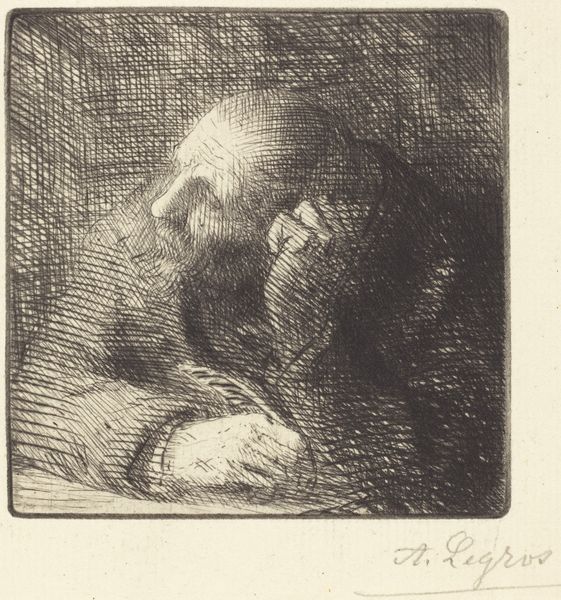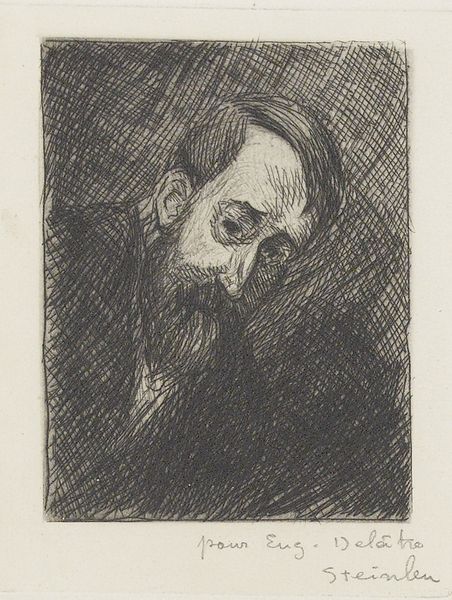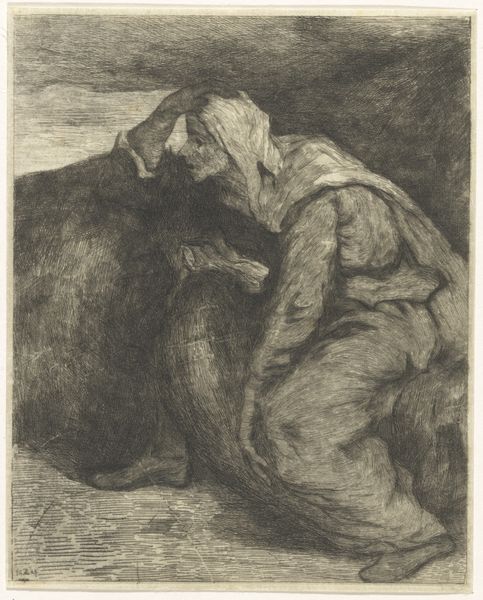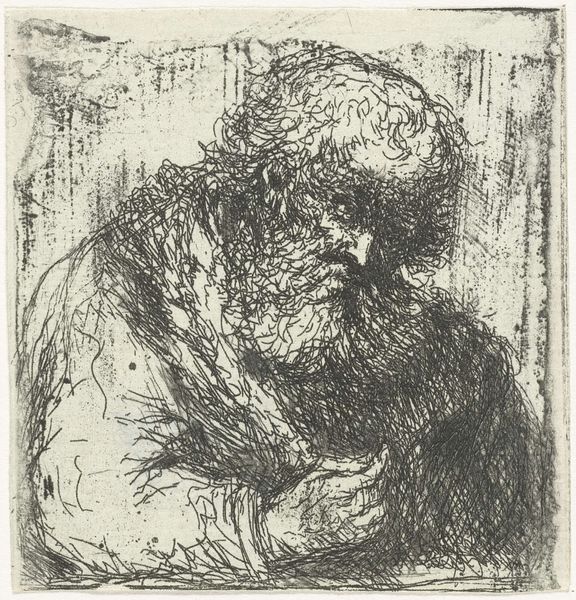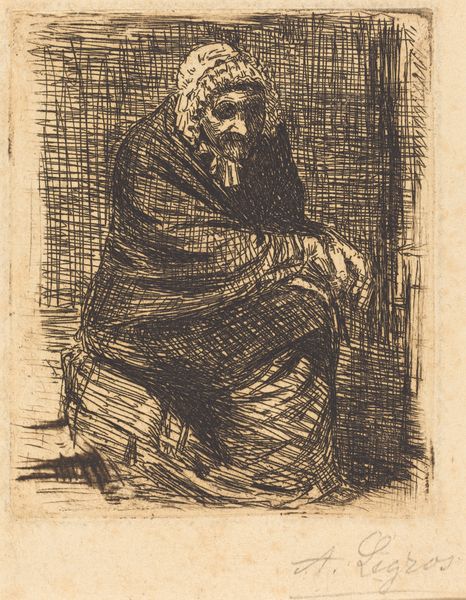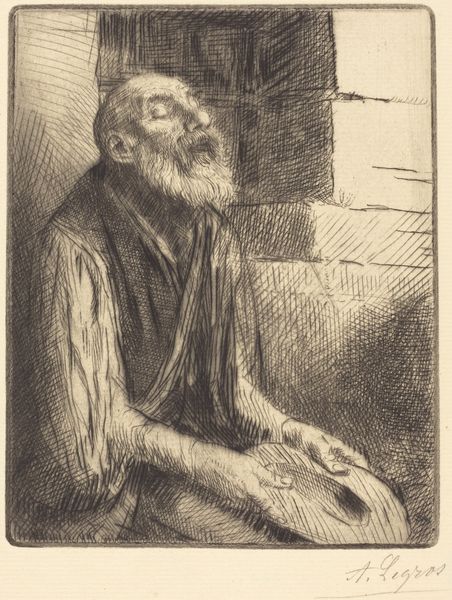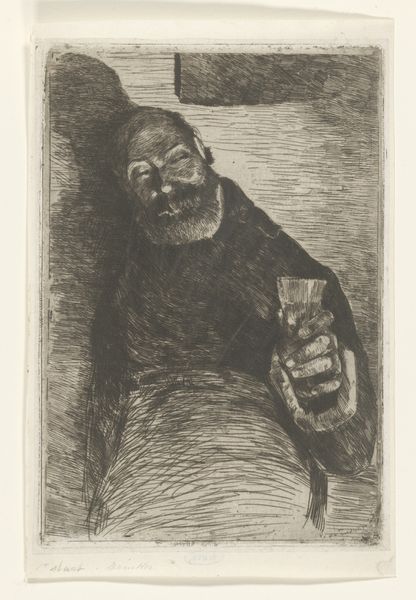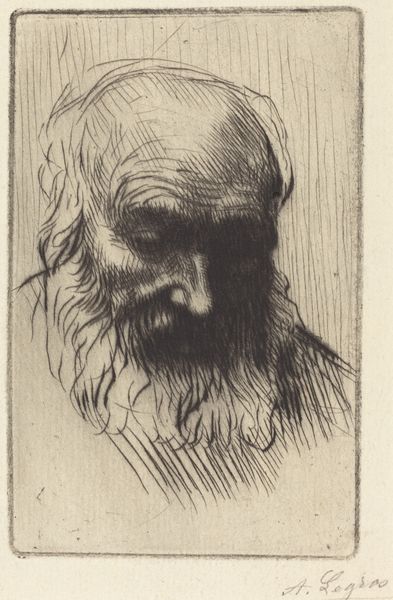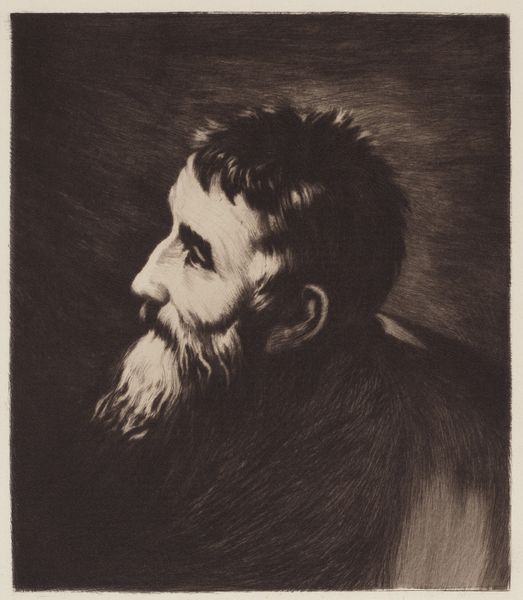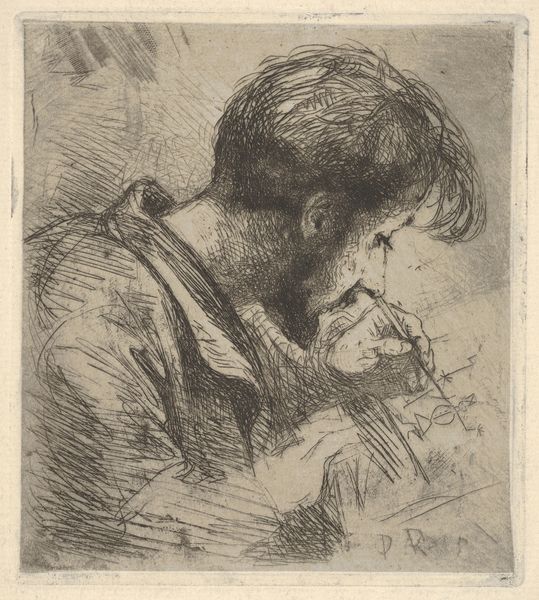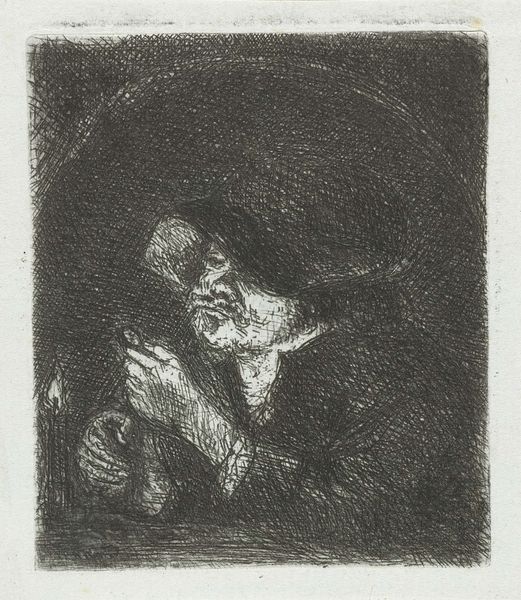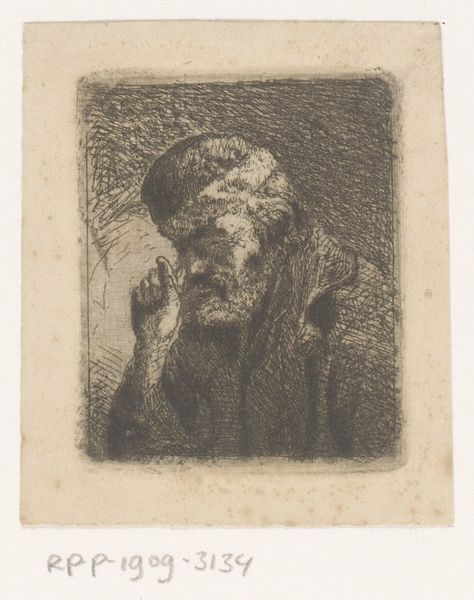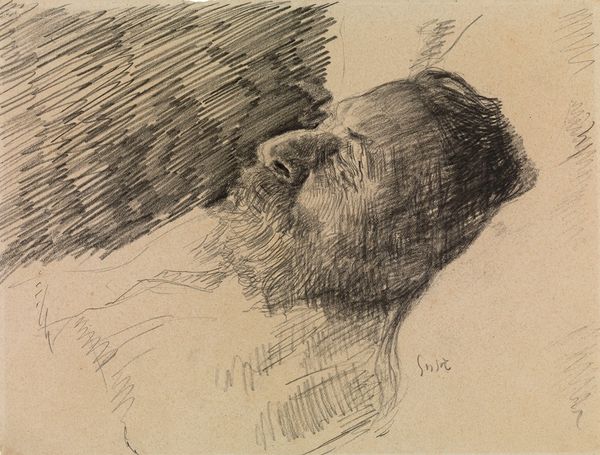
print, etching
#
portrait
# print
#
etching
#
figuration
#
portrait drawing
#
realism
Copyright: National Gallery of Art: CC0 1.0
Editor: Here we have "Poor Man" by Alphonse Legros, rendered as an etching. The stark lines and somber tone really evoke a sense of hardship and resignation. What social commentary do you see within this piece? Curator: It's impossible to divorce this image from the rise of industrial capitalism in 19th century Europe, and the immense precarity that working-class people faced. Legros wasn’t simply depicting an individual; he was making a statement about the systemic exploitation and dehumanization inherent in that era. Do you see how the man’s bowed head and obscured face contribute to this feeling? Editor: Absolutely. It's like he’s been stripped of his identity, reduced to mere labor. The darkness surrounding him feels oppressive, almost like a cage. Do you think Legros was trying to encourage social reform with art? Curator: Artists like Legros used Realism not just to represent the world accurately, but to expose the social injustices that were often ignored or romanticized. By highlighting the realities of poverty, these works created a space for empathy and critique. The image then serves as a reminder that inequality remains deeply ingrained in our society, and its representation matters. How might this piece speak to contemporary struggles? Editor: It definitely makes me think about the gig economy, and the way so many workers are still struggling to survive without basic security or dignity. It feels relevant. Curator: Precisely. Art has the power to connect us across time, revealing shared experiences of struggle and resilience, challenging us to dismantle systems that perpetuate inequality. The artist makes us think about that which we would prefer to ignore. Editor: Thank you, I see the etching in an entirely new light now. Curator: And that is the point; new light creates the conditions for action and thought.
Comments
No comments
Be the first to comment and join the conversation on the ultimate creative platform.
